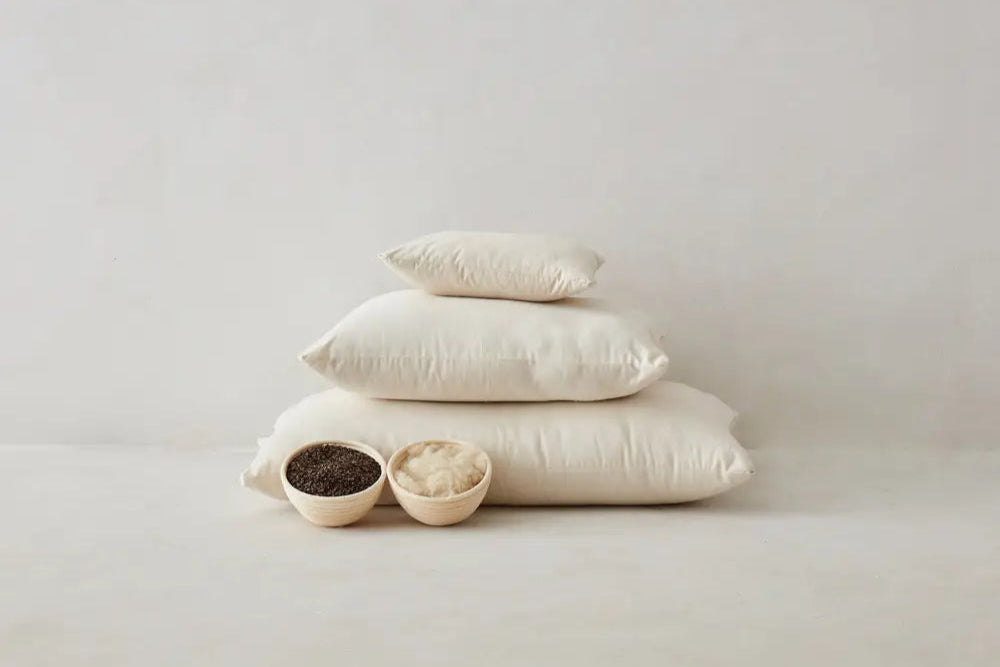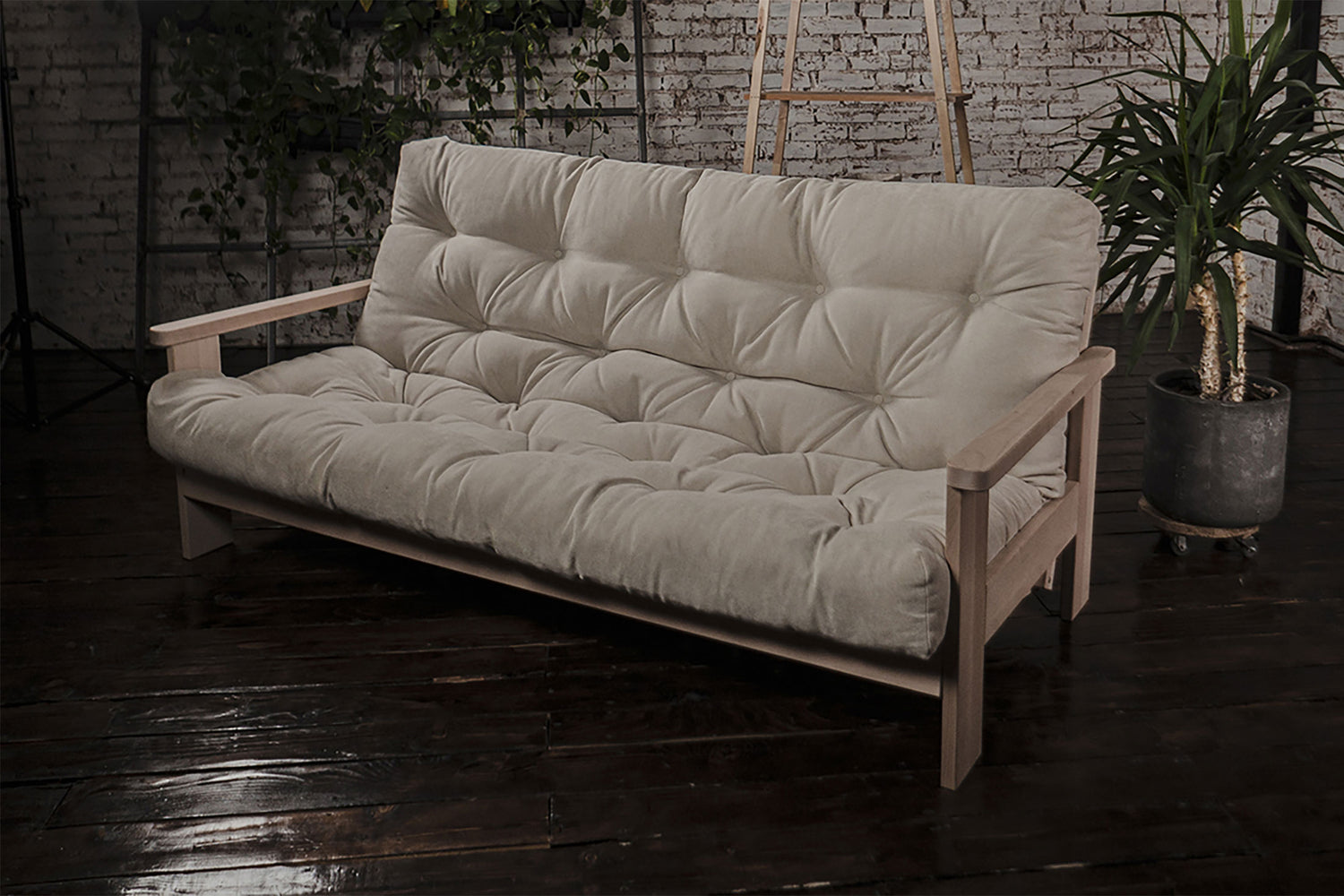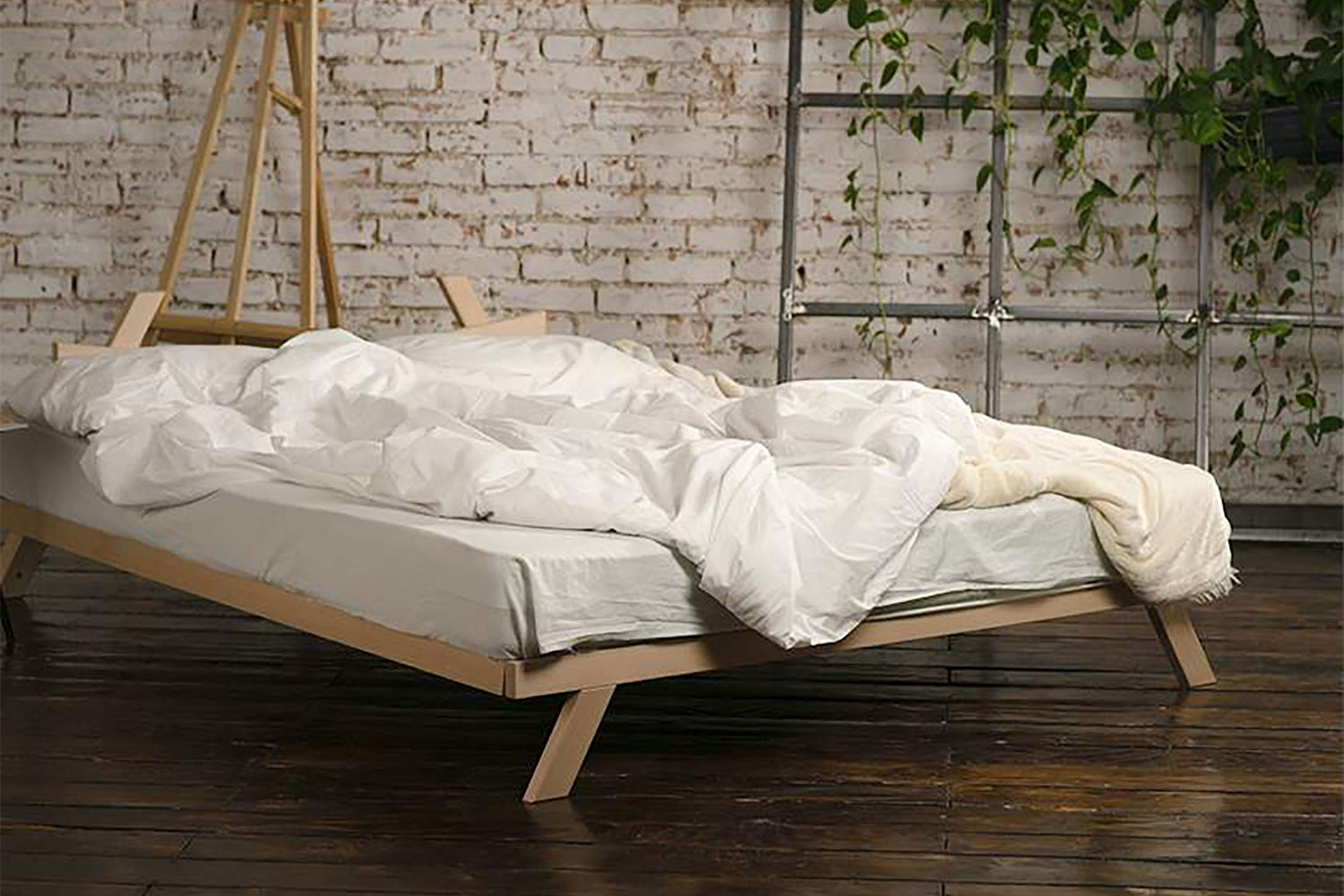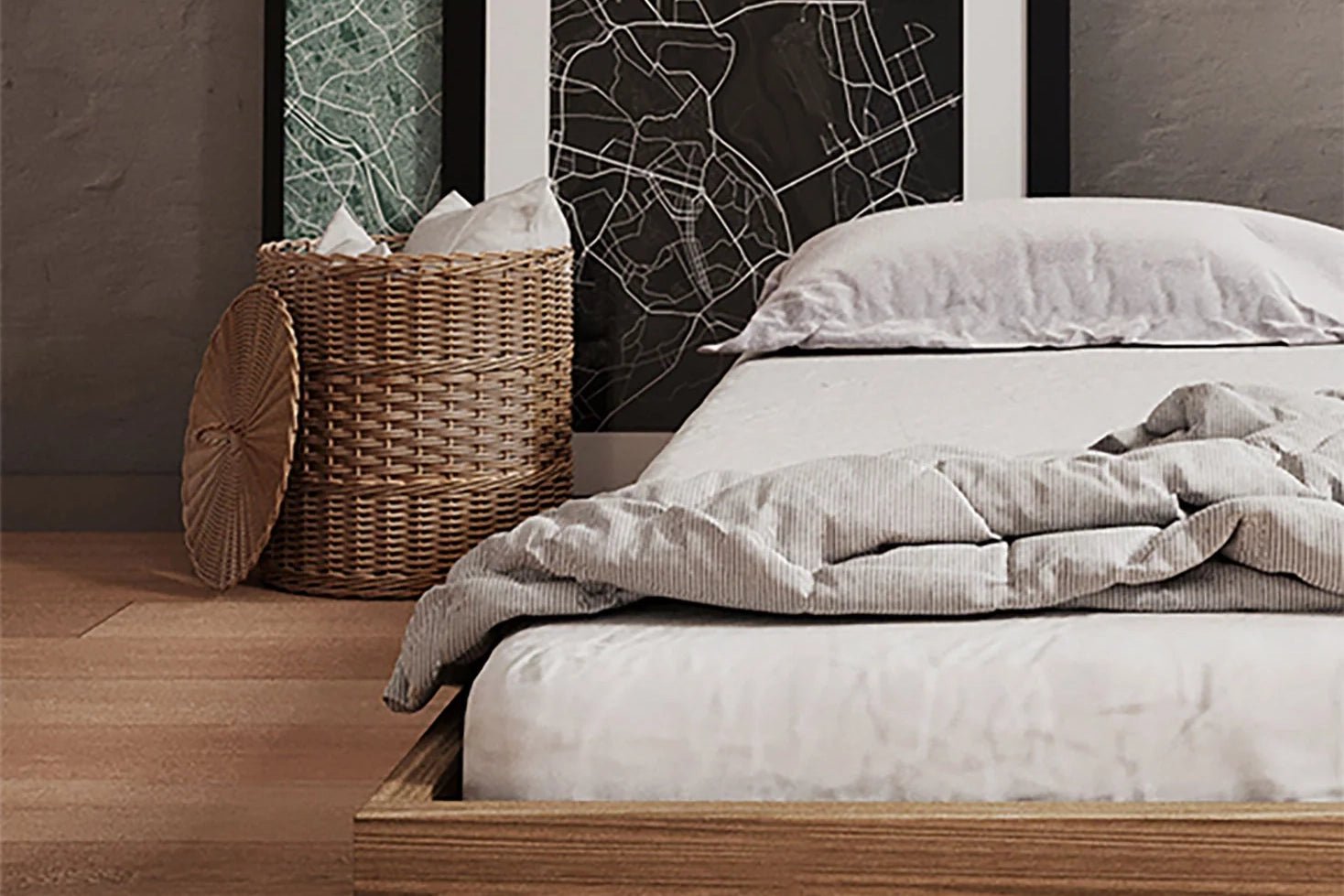
A Guide to the Japanese Sleep System: Building Your Bed the Traditional Way
Share
Minimalist, restorative, and steeped in centuries of tradition—the Japanese sleep system is more than just a way to rest; it’s a philosophy rooted in simplicity, functionality, and natural comfort. If you’re curious about creating a Japanese-style sleeping environment in your home, this guide walks you through every component of the system and how each piece works together to support your health, your space, and your sleep.
At its core, the Japanese sleep system consists of thoughtfully designed, natural bedding elements that can be easily layered, removed, and stored. From the tatami mat foundation to the buckwheat pillow that cradles your head, every piece serves a purpose. Let’s break down the essential elements of this harmonious sleep setup—and how to build your own.

Why Choose the Japanese Sleep System?
- Space-Saving Flexibility: Fold away your bedding during the day to create more room.
- Natural Materials: Cotton, silk, rush grass, and buckwheat—free from synthetics and harsh chemicals.
- Supportive Sleep: Firmer sleep surfaces support spine alignment and overall posture.
- Cultural Tradition: Each element is rooted in centuries of refined practice and simple living.
Tatami Mat – The Breathable Base
The journey begins at ground level with the tatami mat, a firm surface traditionally woven from rush grass and backed with rice straw or compressed board. In a Japanese home, tatami mats often cover the floor, but for Western spaces, they are used as standalone mats placed directly beneath the futon.
Tatami provides firm, stable support while promoting airflow underneath your futon. This prevents moisture buildup and keeps your sleep surface fresh and hygienic. It also introduces a natural texture and aesthetic that transforms any room into a serene, minimalist sanctuary.

Shikifuton – The Japanese Mattress
Laid directly atop the tatami mat is the shikifuton (also written shikibuton), a traditional cotton-filled mattress without springs, foam, or synthetic fillers. It’s firm yet yielding, and typically just a few inches thick—enough to support the body in alignment while remaining flexible and lightweight.
Shikifutons are foldable and easy to store, making them perfect for small living spaces or for those who want to reclaim their bedroom during the day. And because they’re made of cotton, they’re naturally breathable and adaptable to the seasons. You can also layer two for extra cushioning if desired.

Shikifuton Cover – Comfort Meets Cleanliness
To protect your investment and keep your sleep surface hygienic, a shikifuton cover is essential. These removable covers are typically made from soft, breathable cotton and come in a variety of colors and traditional Japanese patterns and textures.
A shikifuton cover helps reduce the frequency of washing the entire mattress by acting as a washable barrier. You can use the cover directly as a bottom sheet or layer another sheet on top. It’s a functional and aesthetic upgrade that makes upkeep easier and adds character to your bed.

Kakefuton: The Japanese Comforter
The kakefuton is Japan’s answer to the Western duvet. Traditionally filled with luxurious mulberry silk or wool, it is both warm and breathable—perfect for regulating your body temperature through the night.
Unlike heavy synthetic comforters that trap heat and moisture, the filling in a kakefuton naturally insulates without overheating. It’s hypoallergenic, lightweight, and molds gently to your body. This is where comfort meets tradition, in a quilt designed for year-round use.

Kakefuton Cover – Style and Protection
Much like a duvet cover, the kakefuton cover is removable and washable. Made with the same care and artistry as the shikifuton cover, it adds a decorative layer while protecting the silk or cotton interior from wear and sweat.
Kakefuton covers allow you to customize the look of your bed, coordinate with your room decor, and maintain cleanliness with ease. Choose from a variety of colors or traditional Japanese prints to add a personal touch.

Pillowcase – Finishing Touch for Standard Pillows
If you're using a standard pillow (such as a merino wool bed pillow), a handcrafted pillowcase made from imported Japanese fabric brings cohesion to your bedding ensemble.
It’s not just about matching aesthetics—it’s also about bringing the breathable, natural comfort of Japanese textiles to every part of your sleep. These pillowcases are soft, durable, and elevate the look and feel of your setup.
Buckwheat Hull Pillow – Traditional Support for Head and Neck
Arguably the most unique element of the Japanese sleep system is the soba gara makura, or buckwheat hull pillow. Filled with natural buckwheat husks, these pillows offer moldable, breathable support that conforms to your exact contours.
Buckwheat hulls shift with your movements, offering stable support that reduces pressure on your neck and shoulders. They’re naturally cooling, adjustable via a hidden zipper, and available in both rectangular and neckroll shapes. For many, this pillow is the secret to a deeper, more aligned sleep.

How to Build Your Japanese Sleep System
Ready to design your own? Here’s a simple roadmap:
- Start with your shikifuton mattress size – Choose a size that fits your space and needs (twin, full, queen, etc.).
- Add a tatami mat – Provides essential support and breathability beneath your futon.
- Choose your covers – A shikifuton cover and kakefuton cover will help preserve your bedding and enhance your style.
- Select your comfort layer – A silk or wool-filled kakefuton adds insulation without weight.
- Complete with pillows – A buckwheat hull pillow or traditional neckroll offers ergonomic support.
Embracing the Japanese Sleep System
The Japanese sleep system offers a harmonious blend of tradition, functionality, and minimalist design. Rooted in centuries-old practices, this approach to rest emphasizes simplicity, natural materials, and adaptability. By understanding and integrating its core components, one can transform their sleeping environment into a serene and healthful sanctuary.
Adopting the Japanese sleep system is more than a change in bedding; it's an invitation to embrace a lifestyle that values simplicity, mindfulness, and harmony with nature. By integrating natural materials and versatile designs, this approach fosters a restful environment conducive to both physical well-being and mental tranquility.











